Desarrollo e implementación de un widget de accesibilidad web de código abierto para entornos institucionales
Main Article Content
Abstract
Web accessibility guarantees that users can interact with systems under inclusive conditions, allowing them to perceive, understand, navigate and interact with a web product. In the absence of an open-source tool that could be added to the Escuela Nacional de Estudios Superiores Unidad Juriquilla systems, a custom solution that satisfies this necessity was developed. Accessibility and visibility guidelines established by the Universidad Nacional Autónoma de México and the Web Content Accessibility Guidelines were used for the tool design and elaboration process. Waterfall methodology was used as the basis for the development of the solution, covering from planning to operation and maintenance of the tool. The qualitative and quantitative tests demonstrated its viability as an alternative to commercial solutions because they could replicate functionalities of paid products. This tool was initially incorporated in a dissemination microsite of the dependency and, being technologically agnostic with regard to languages and development frameworks, it was integrated into the rest of the internal systems. The main functionalities aimed at improving the user's experience were implemented, among them: contrast adjustment, text size modification, link highlight, visibility optimization, vertical spacing control, text alignment and reading guide. The implementation of a screen reader was out of reach due to native support limitations of some web browsers; nevertheless, its inclusion is contemplated in future versions along with the improvements that can be collected from final users feedback.
Downloads
Article Details

This work is licensed under a Creative Commons Attribution-NonCommercial-NoDerivatives 4.0 International License.
Este trabajo tiene la licencia CC BY-NC-ND 4.0
References
Accessiblyapp. (2025). Leading Accessibility Widget for ADA & WCAG Compliance. Accessibly. https://accessiblyapp.com/
AudioEye. (2025). Plans & Pricing. AudioEye®. https://www.audioeye.com/plans-and-pricing/
Beaird, J., Walker, A., & George, J. (2020). The principles of beautiful web design. SitePoint Pty Ltd.
Congreso de la Unión. (2024). Ley General para la Inclusión de las Personas con Discapacidad, artículo 32. Diario Oficial de la Federación, 14 de junio de 2024. Recuperado el 9 de junio de 2025, de https://www.diputados.gob.mx/LeyesBiblio/pdf/LGIPD.pdf
EqualWeb. (2025). Affordable web accessibility solutions pricing. EqualWeb. https://www.equalweb.com/10842/8592/pricing
Fowler, M., & Beck, K. (2018). Refactoring: Improving the Design of Existing Code (2.ª ed.). Addison-Wesley Professional.
HTTP Archive. (2025). State of the Web - Page Weight. HTTP Archive. https://httparchive.org/reports/page-weight
Moguel Pedraza, F. I. (2024). Recomendaciones técnicas para implementar y asegurar la accesibilidad web en los sitios institucionales. Cuadernos Técnicos Universitarios de la DGTIC, 2 (2). https://doi.org/10.22201/dgtic.ctud.2024.2.2.50 DOI: https://doi.org/10.22201/dgtic.ctud.2024.2.2.50
Raymond, M. A., Smith, H., Carlson, L., & Gupta, A. (2024). An Examination of Digital Accessibility Within Social Media Platforms: Problems for Vulnerable Consumers and Policy Implications. Journal of Advertising Research, 64(4), 430–450. https://doi.org/10.2501/JAR-2024-026 DOI: https://doi.org/10.2501/JAR-2024-026
Roth, R. E., Çöltekin, A., Delazari, L., Denney, B., Mendonça, A., Ricker, B. A., Wu, M. (2024). Making maps & visualizations for mobile devices: A research agenda for mobile-first and responsive cartographic design. Journal of Location Based Services, 18(4), 408–478. https://doi.org/10.1080/17489725.2023.2251423 DOI: https://doi.org/10.1080/17489725.2023.2251423
Sienna Accessibility. (s.f.). Sienna Accessibility Widget. Sienna Accessibility. https://accessibility-widget.pages.dev/
Sommerville, I. (2016). Software Engineering (10.ª ed.). Pearson.
W3C. (2023). Introduction to Web Accessibility. Web Accessibility Initiative (WAI). https://www.w3.org/WAI/fundamentals/accessibility-intro/
World Wide Web Consortium. (2018). Web Content Accessibility Guidelines (WCAG) 2.1. W3C. Recuperado el 6 de marzo de 2025, de https://www.w3.org/TR/WCAG21/
Youvan, D. C. (2024). The Essence of Less: Exploring Abstract and Minimalist Concepts Across Art, Design, Technology, and Philosophy.



